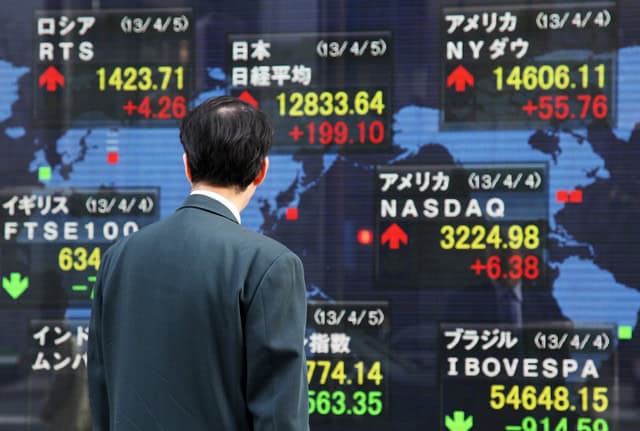
Stocks in Asia were mixed on Tuesday, as the People’s Bank of China published its new loan prime rates which would result in cheaper borrowing costs for companies.
Mainland Chinese stocks were mixed on the day, with the Shanghai composite shedding earlier as it slipped 0.11% to about 2,880.00. The Shenzhen component was flat at 9,328.73, while the Shenzhen composite added 0.137% to approximately 1,574.12.
In Japan, the Nikkei 225 rose 0.55% to close at 20,677.22, while the Topix index added 0.83% to finish its trading day at 1,506.77. Australia’s S&P/ASX 200 closed 1.2% higher at 6,545.00 as most of the sectors advanced. Over in South Korea, the Kospi gained 1.05% to end its trading day at 1,960.25.
In Hong Kong, the Hang Seng index returned to negative territory, slipping about 0.3% as of its final hour of trading. Hong Kong-listed shares of HSBC fell 1.21%..
Overall, the MSCI Asia ex-Japan index traded 0.35% higher.
The Reserve Bank of Australia’s (RBA) July meeting minutes, released on Tuesday, showed the central bank would consider further easing if evidence suggested “this was needed to support sustainable growth in the economy and the achievement of the inflation target over time.”
The RBA kept interest rates at all-time lows earlier in the month after easing by a quarter point in both June and July.
China’s new loan prime rates
The People’s Bank of China (PBOC) debuted its new loan prime rates (LPR) under a new mechanism that was unveiled over the weekend. Some analysts have said the reform can be seen as a guided rate cut.
The new 1-year LPR was set at 4.25%, as compared to 4.31% previously. The 5-year LPR was at 4.85%.
“The new fluctuating LPR replaces their existing fixed benchmark lending rate,” Kathy Lien, managing director of foreign exchange strategy at BK Asset Management, wrote in a Monday note. “By allowing the rate to float, they are basically allowing interest rates to fall.”
“The lower the rate, the more positive the reaction in the market,” Lien said. “Aside from this rate cut, investors are also waiting for fiscal stimulus from China.”
“There’s a number of levers here that the Chinese authorities are starting to move on around stimulating the economy,” Martin Lakos, division director at Macquarie Wealth Management, told CNBC’s “Street Signs” on Tuesday.
“There’s a number of areas here that the authorities are going to be, we think, focusing in on and, quite clearly … they’re wanting to be providing the opportunity or … the environment for improved lending … in the economy,” Lakos said.
Currencies and oil
The U.S. dollar index, which tracks the greenback against a basket of its peers, was at 98.385 after seeing lows below 97.5 last week.
The Japanese yen traded at 106.46 against the dollar after touching an earlier low of 106.68. The Australian dollar was at $0.6779 after seeing an earlier low of $0.6751.
Oil prices were mixed in the afternoon of Asian trading hours. The international benchmark Brent crude futures contract was 0.15% lower at $59.65 per barrel, while U.S. crude futures were just above the flatline at $56.22 per barrel.

